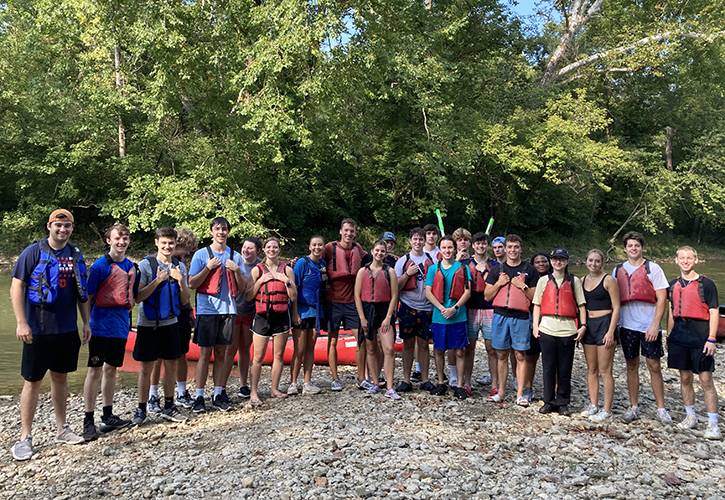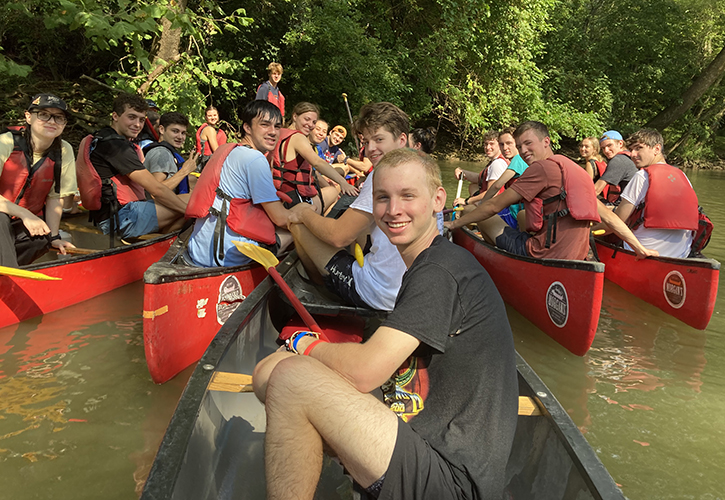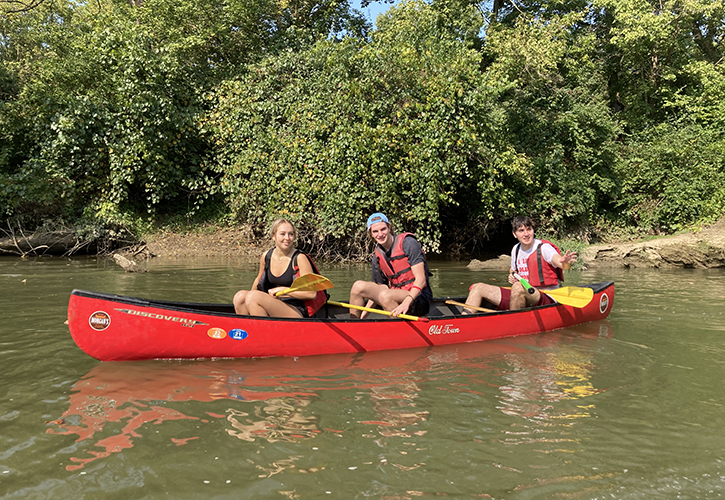Integrated Learning-Living Communities

Business Ethics and Environmental Sustainability: BEES canoe the Little Miami and master atlatls at Fort Ancient
After a warmup hike in Woodland Cemetery to learn the names of trees in the region, The BEES foraged farther — 38 members of the integrated living learning community BEES — Business Ethics and Environmental Sustainability — paddling wooden canoes down a 6 mile stretch of the Little Miami Scenic River (Ohio’s first listed scenic river). The destination: the Fort Ancient (Hopewell) Earthworks and Nature Preserve — on track to being named a UNESCO World Heritage Site. While earlier, prehistoric, visitors to the valley encountered larger prey — bison and deer — the BEEs spotted only vultures, turtles and a (harmless) water snake. Elder BEES — Dustin Teders, Mark Roble, Chloe Fields, and Colin Rohr — as well as the economics supplemental instructor Isabelle Bailey — joined the new-BEES to ensure no foragers were felled by water cannon fire.
Compensation for calories burned came in the form of good picnic fare (both Boursin — vegan and dairy versions — as well as French bread and the local specialty, DLM killer brownies) — allowing for little in the way of compost to accumulate. This menu underscored the passage of various ‘invasive’ living things through the Ohio valley — after the Woodland tribes, came French trappers and explorers, British and American surveyors, the nurseryman Johnny Appleseed, and later the most devastating import, disease.

For the newest arrivals to the valley — the fall cohort of BEES — empirical evidence suggested that several had never handled a paddle before. This would have been costly back in the day (@ 400 CE) since so many gifts (what economists term transfers) and trade goods arrived by river, to complement the cultural ceremonies/astronomical assemblies that apparently took place at many mound locations. But the learning curve was steep and everyone arrived safely — if soggy, ready to acquire yet another skillset: wielding an atlatl. The culmination of the training—an atlatl (assisted spear) throwing contest — yielded two winners — Nathan Blunt and Colin Hanrahan — revealing that the Miami Valley’s local fauna are still at risk from the ’most invasive species’ — humans. A scavenger hunt in the museum and a short talk by curator Pam Hunt revealed the economic range of the Woodland economy. The Hopewell alleviated local material scarcity by trading extensively, acquiring obsidian from Yellowstone, shells from the Gulf of Mexico, flint from northern Ohio — all used as inputs to construct, not weapons, but intricate jewelry such as eagle claws made from copper and mica. The new-BEES acquired the most important asset of all: new friends.

